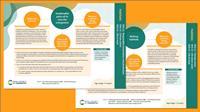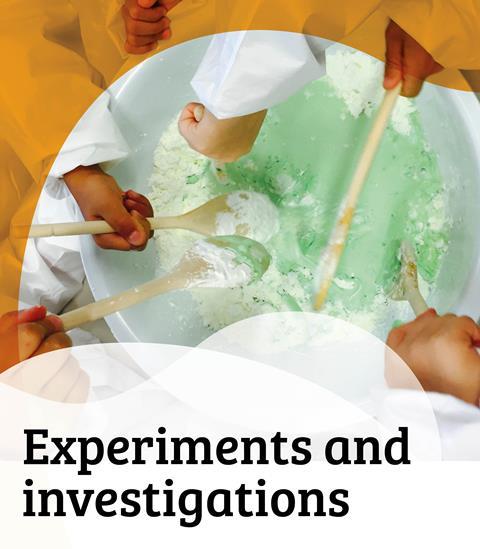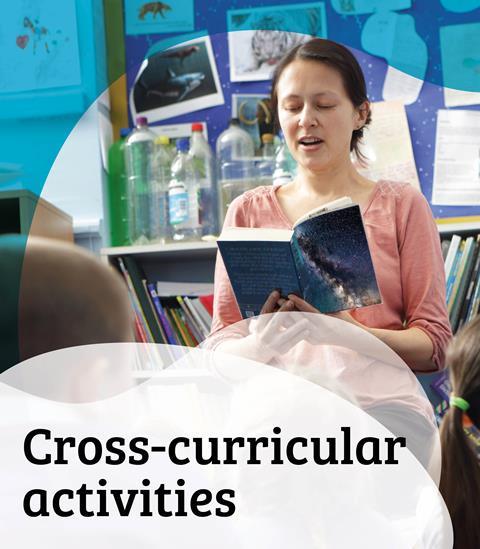Use protecting the habitats of orangutans and polar bears as contexts for teaching about living things
This resource is also available in Welsh and Irish
Get the Welsh language version.
Get the Irish language version.
How does palm oil production affect the orangutan’s habitat? How can we protect polar bears by protecting their icy home? This topic web contains sustainability context ideas and classroom activity suggestions for teaching about living things and their habitats to 7–9 year olds. Explore the habitats of organutans and polar bears, what threats they face, and make links to other science topics such as materials and states of matter.
Each web explains the background science, describes how scientists are working in this field, and suggests ways to explore this in the classroom.
How to use this topic web
This resource is part of our Sustainability contexts for primary science teaching series. The series features a total of 20 topic webs designed to help you link your existing curriculum teaching to sustainability issues.
Find out more about how to use this topic web in your teaching.
-

Download this resource
Get both topic webs on protecting animal's habitats for 7–9 years, with tips and suggested activities to use in the classroom.
Topic web 1: Sustainable palm oil to save the orangutans
What’s the science?
Orangutans are great apes that live in the rainforest habitats of Indonesia and Malaysia. They are critically endangered. Companies cut down the trees in which orangutans live to create palm oil plantations. This is reducing biodiversity in the area, removing the trees in which the apes live, and the fruit and insects they eat. The deforestation also contributes to climate change, producing carbon and reducing the trees which remove carbon dioxide from the air.
What are scientists doing about it?
Palm oil is semi-solid at room temperature with no colour or odour and is used in about 50% of processed foods and cosmetics. Palm oil trees produce more oil per hectare than other plants, so stopping its use completely would be very difficult. Instead, scientists are working on sustainable ways of farming palm oil including careful selection of plantation sites, reduction of pesticides and even using a pollinating weevil to grow it in less ecologically important areas around the world.
How could you explore this in the classroom?
- Introduce the learners to the plight of orangutans with this advert from the retailer Iceland. Using secondary sources, research orangutans with the learners. Use maps to find their location and write information leaflets about the importance of using sustainably sourced palm oil. Learners could use bar graphs to show the decline of orangutans over time and present their findings.
- Learners can consider how orangutans are adapted to their forest habitat. What do they eat? How do they travel? Ask learners how orangutans might adapt to a new habitat. Learners could write information texts to share knowledge.
- Carry out some fair tests to think about the properties of oil:
- Try mixing oil with water/milk/a fizzy drink/tea. What do learners notice? What are the properties of oil? Introduce vocabulary like ‘viscosity’. Learners could make their own lava lamp with water, vegetable oil and food colouring.
- Try a simple cooking recipe and replace the butter with palm oil or sunflower oil – does it taste different? Is the consistency different?
Curriculum links
Habitats; sustainability; predicting; comparing; researching; fair testing; literacy; geography; data handling.
Topic web 2: Melting habitats
What’s the science?
Polar bears are a marine mammal whose habitat is the sea ice of the Arctic. They can swim long distances and have insulating fur. They catch their prey, seals, by waiting on the edge of the ice. Unfortunately, their habitat is in danger. Melting sea ice reduces the space they have to hunt and oil in the environment from oil extraction can reduce insulation in their fur and contaminate their prey.
What are scientists doing about it?
Scientists are trying to find out how we can reduce climate change to help maintain the habitat of polar bears. They recommend reducing the use of fossil fuels and have developed alternative, sustainable energy forms, like solar or wind power. Environmental scientists develop tools to enable us to see and measure the pollution around us. They also research, campaign and encourage governments to adopt more sustainable practices.
How could you explore this in the classroom?
- Learners can design an experiment to delay melting ice. Try using different insulators as the variables (tin foil, wool, bubble wrap) to see what keeps the ice colder for longer and record how long it takes for the ice to melt. Does being in different rooms make it melt quicker/slower? How can they measure the temperature of the room?
- Consider how water can be polluted and affect the health of animals who live near it. Create a red cabbage indicator and test different solutions learners can find in their kitchen at home. How acidic or alkali are those solutions? If water has a pollutant in it, what effect do they think that might have on an animal that drinks it or swims in it? Discuss the effect of pollutants on an animal’s habitat.
- Read ‘Leaf’ by Sandra Dieckmann about a polar bear to the learners. To link to geography they could draw a map of the bear’s journey, in PHSE you could talk about about inclusion and friendship, or in DT they could create their own flying machines.
- Watch Greta Thunberg speak passionately about the importance of taking action against climate change for our futures. In literacy, learners can write their own speeches to encourage their community to make a difference.
Curriculum links
Making predictions; habitats; materials; fair testing; observing; comparing; presenting findings in different ways; introducing thermometers.
Try these additional resources
- Try more sustainability topic webs to provide context for key topics in primary science, including electricity, materials and water and the water cycle for 7–9 year olds.
- Explore habitats further with our topic web on habitats for 4–7 year olds.
Downloads
Protecting animals and their habitats | 7-9 years
PDF, Size 0.13 mb
Sustainability contexts for primary science
- 1
- 2
- 3
- 4
- 5
- 6
 Currently reading
Currently readingProtecting animals and their habitats | 7–9 years
- 7
- 8
- 9
- 10
- 11
























No comments yet